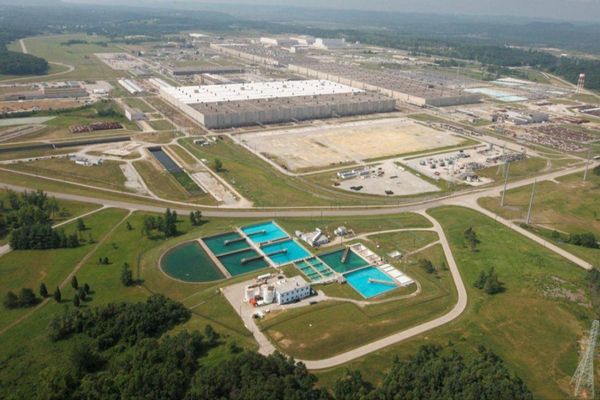
Methane emissions from Australian coalmines and gas production could be more than 60% higher than federal government estimates suggest, according to satellite and ground data released by the International Energy Agency.
The results of the Paris-based energy organisation’s annual methane tracker, released this week, led to renewed calls for the Albanese government to require emissions cuts at existing local and gas mines using existing technology and to block new developments.
Methane is a potent but short-lived greenhouse gas released from coal seams, oil and gas wells and production, leaking pipelines and agricultural livestock. Scientists say it is responsible for about 30% of global heating since the Industrial Revolution, and warned rapid cuts are needed to limit short-term warming.
The IEA has repeatedly found methane pollution was greater than suggested by official data, often compiled by fossil fuel companies and submitted by the government to the UN.
The latest tracker found 2.23m tonnes of methane was released from energy production in Australia last year, 63% more than the federal climate change department estimate of 1.37m tonnes. Other satellite-based studies have reported discrepancies at some Queensland coalmines.
The Greens’ leader, Adam Bandt, said it underlined the need for the government to use a proposed revamp of the safeguard mechanism, a climate policy applied to major industrial sites, to “rein in rising methane by stopping new coal and gas mines”.
The safeguard mechanism was introduced by the Coalition in 2016. It was promised to put a limit on greenhouse gas emissions from about 200 major industrial facilities.
It applies to facilities that emit more than 100,000 tonnes of carbon dioxide equivalent a year. Each facility is set an emissions limit, known as a baseline.
The Coalition said companies that emitted above their baseline would have to buy carbon offsets or pay a penalty. In practice, facilities were allowed to change their baselines, few were penalised and industrial emissions continued to increase.
Labor plans to revamp the scheme.
It would set new baselines based on emissions intensity - how much a facility releases per unit of production. Baselines will be reduced by 4.9% a year.
Companies could choose whether to make onsite emissions cuts or buy Australian carbon credit units.
New polluting facilities, including gas and coal mines, could open and would be set baselines at “international best practice”.
Companies that emit less pollution than their baseline allows would be awarded a new type of “safeguard credit”. These within-scheme credits could be sold to other polluting facilities that emit more than their baseline and need offsets.
Labor wants the changes to start on 1 July 2023.
It said the difference between the IEA and government methane estimates, when converted to carbon dioxide equivalent, was roughly the same as the annual cut in carbon emissions Labor had promised from the safeguard between now and 2030.
“When the climate pollution from methane is properly counted it is beyond doubt there is no room for new coal and gas mines in Australia,” Bandt said.
The climate change minister, Chris Bowen, said Australia’s national greenhouse gas inventory data met international emissions-reporting commitments and were subject to review and continuous improvement to ensure accuracy.
He said the safeguard mechanism as applied under the Coalition since its introduction in 2016 was “completely ineffective” at limiting methane, but Labor’s proposed revamp would drive down emissions at the country’s biggest emitting facilities.
“We look forward to the Australian Greens supporting our proposal in parliament so that methane emissions from large coal, oil and gas projects are effectively regulated,” Bowen said.
A crackdown on methane emissions from fossil fuel extraction is a potential source of agreement between the government and the Greens as they negotiate over the redesign of the safeguard mechanism, which the government wants to start operation from 1 July.
It says it will cut emissions intensity from 215 big polluting sites by 4.9% a year to help meet the national 2030 emissions reduction target (a 43% cut compared with 2005). The Greens and cross bench MPs have criticised the plan for allowing new coal and gas developments and unlimited use of carbon offsets.
The Albanese government has signed up to a global pledge to cut methane by 30% by 2030. The IEA said methane emissions oil and gas could be reduced by 75% with existing technologies, “highlighting a lack of industry action on an issue that is often very cheap to address”.
It said less than 3% of global oil and gas company income last year would be required to make the $US100bn investment needed to make a cut of that scale.
The Australian Conservation Foundation said the IEA data showed Australia was responsible for 1.6% of global methane emissions but had only 0.33% of the world’s population.
Suzanne Harter, a climate and energy campaigner, said methane was more than 80 times more damaging to the atmosphere over 20 years than CO2. She said farmers in Australia were working to cut methane from their livestock, but the coal and gas sector had been slower to act.
“Direct fugitive emissions from open cut coal mining, which continue for many years after mining stops, are a big problem in Australia,” she said. “Plans to expand coalmining would lock in these uncontrolled emissions for years to come.”







